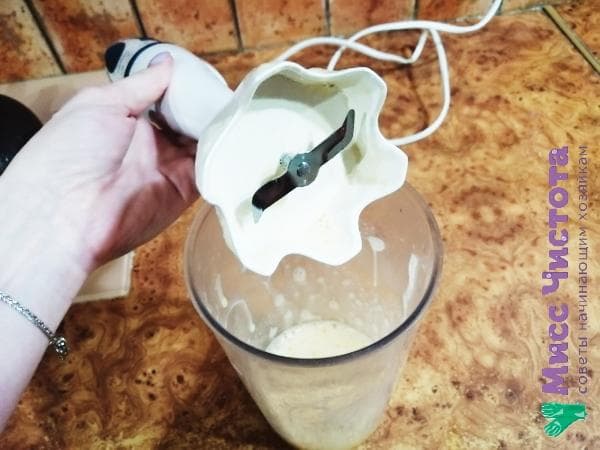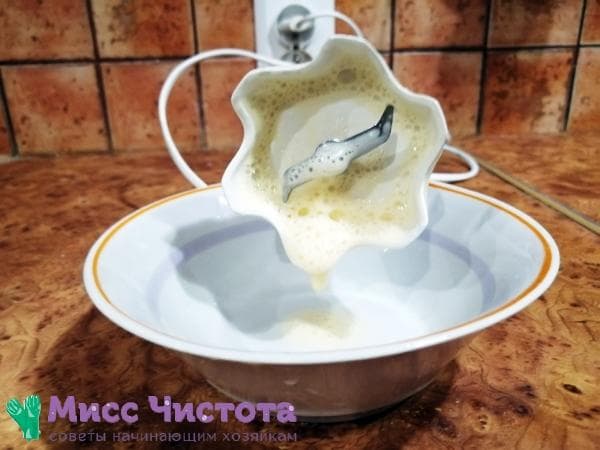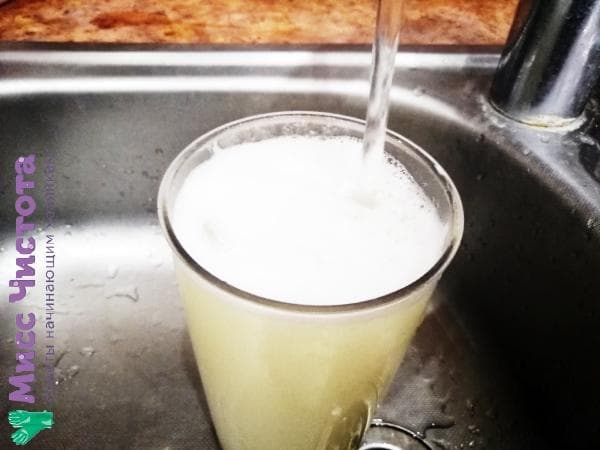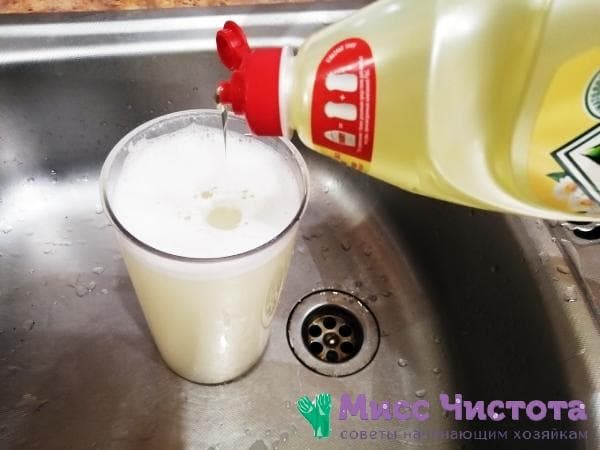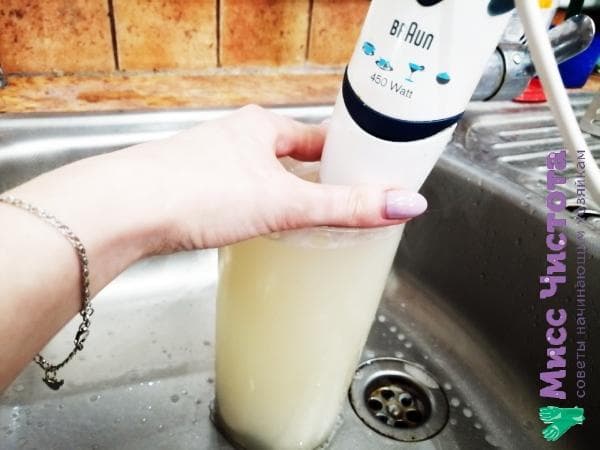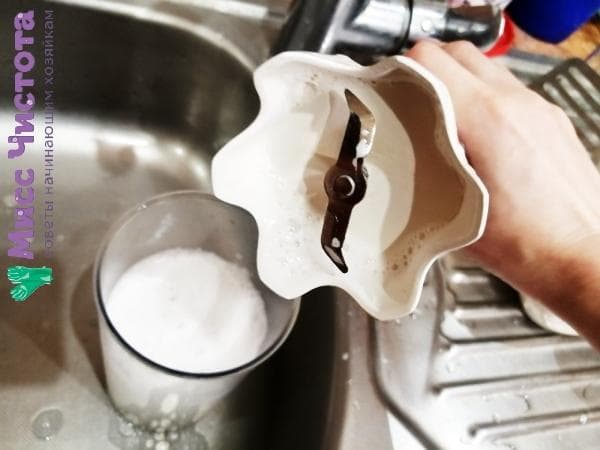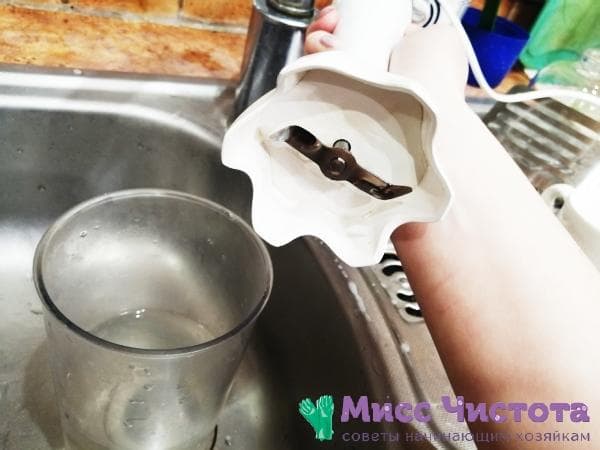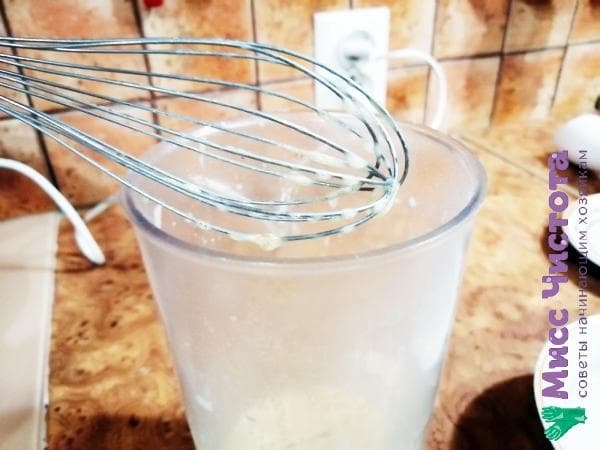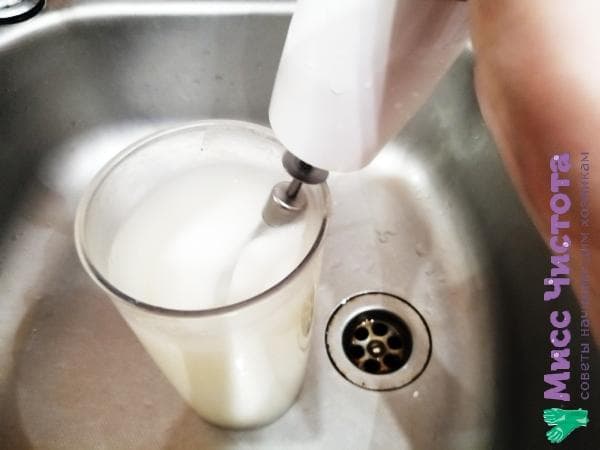We wash the blender without disassembling it, quickly and with one click of a button.
A blender is an ideal assistant, a lifesaver that can be washed without taking it apart!
Usually cleaning this miracle is a complete test of manual dexterity. After all, you really don’t want to cut your fingers or lips on sharp knives.
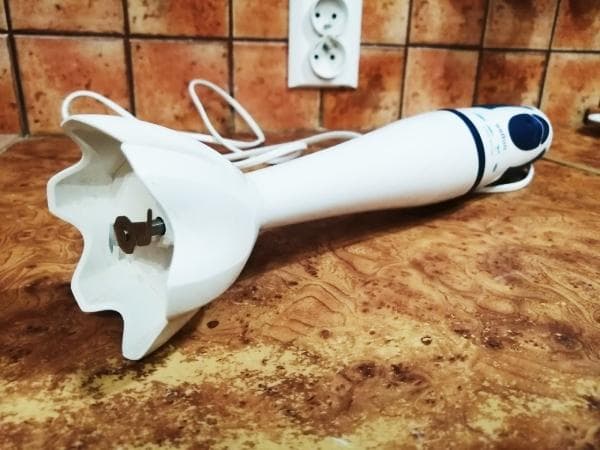
Cleaning your blender without harming yourself
I have read stories on the Internet more than once about how you can achieve cleanliness without disassembling the instrument or using your hands. A dishwasher is also not needed.
After I heard a similar method from a colleague at work, I decided I had to try it!
So, what we have: a dirty container and a knife.
According to the stories, you need to act as follows:
- Water (cold or room temperature) is poured into the container. Ideally, it should “cover” the entire dirty surface.
- A few drops of detergent drip in. The blender is immersed in water.
- We press the “start” button and watch how the tool cleans itself! It sounds easy, we just have to check it in practice.
Using a new method
I prepared a pie and beat eggs with flour according to the recipe. It was then that I decided to wash off the dirt differently than usual.
I “modified” the method a little - I used almost hot water.
I dripped some detergent (a small amount, less than a teaspoon).
I lowered the blades so that they touched the bottom. I prudently covered the top with my hand to avoid splashes (just in case!).
Well, impressive, but not clean enough. Repeated the procedure with hot soapy water.
And after 2 times - with a clean one to remove any remaining product on the walls.
I must say – the method worked great! The knives are clean, there is no dirt left anywhere.
What about the whisk?
Well, the method worked with a knife, but what about the whisk?
I decided to repeat everything exactly: I beat the eggs with flour, added hot water and detergent to the container. I also lowered the instrument into the water.
I repeated the procedure with the soap solution twice. Afterwards, “rinsed” in clean water.
The result is obvious!
Pros and cons of methods, some tips
Having tried this simple but quite effective method, I drew some conclusions.
To begin with, the positive side:
- Speed. It really saves time! Especially if you turn on the maximum speed when cleaning.
- Safely. There is absolutely no risk of injuring the skin of your hands, tearing off a nail, etc.
- Versatile. If you want to minimize the use of detergents, then instead of a soap solution, you can safely use a soda solution.
Minuses:
- May not cope with dried food or more “heavy” stains.
- In some cases, multiple repetitions are necessary.
- In hard-to-reach places, dirt may remain. But this is not fatal: you can carefully remove it with a toothpick or napkin.
A few conclusions that I have drawn or advice for the future:
- Always rinse the blender several times in clean water and check with your hands for any grease or detergent.
- If you are dealing with dried dough, for example, then it is better to first pour warm water into a container, place the tool and let it settle. It will be much easier.
- If it was with whipped egg whites that dried on the blades, it is better not to experiment.It is more difficult to wash this film, and a dried layer can negatively affect the operation of the instrument.
- Be careful! Since the process uses a lot of water and a machine powered by electricity, there is always a risk of droplets. Even though modern household appliances are designed to minimize such risks, it is better to play it safe and cover the top of the glass with your hand or pour less water.
Bottom line: the method is excellent and works. Enjoy it for your health!
